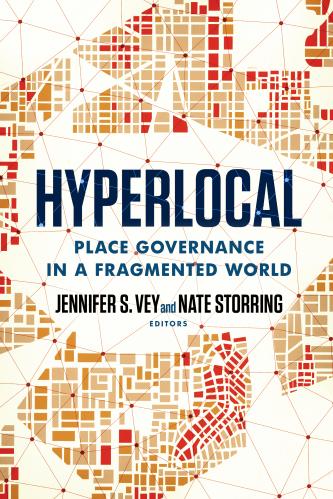About seven years ago, Project for Public Spaces and Brookings joined forces to pilot the Bass Initiative on Innovation and Placemaking, with generous funding from Bob and Anne Bass. For the better part of two years, our two organizations worked together to explore the “how” and “why” behind the innovation economy’s shifting spatial geography. We wanted to understand (and through our research and writings, support) innovation “hubs” or “districts”—areas where advanced industries, institutions, and workers cluster and connect in dense, largely urban spaces. Our work centered on the economy of these areas as well as the physical attributes and amenities needed to make them thrive.
But as we started to engage with emerging innovation districts, it became increasingly apparent that how—and how well—a district was organized was key to shaping its growth and success. Was there an organization or ecosystem of organizations that had a clear vision for the district, an agreed-upon set of outcomes they hoped to achieve, and defined strategies that stakeholders could collectively implement? If not, how might such a governance structure be created? Who would be part of it? Whose voices would it represent? And where would the money to sustain it come from?
To answer these questions, we dabbled in research around the varying kinds of organizational structures that in one way or another exercise governance over places, including private civic or business institutions (such as a neighborhood association or chamber of commerce), community-based nonprofit organizations, and public-private entities (such as business improvement districts). But we never got very far, nor published any work focused specifically on this topic. And from what we could tell at the time, few others had either.
Until now. Years after that early work together, we are pleased to announce Hyperlocal: Place Governance in a Fragmented World, published by the Brookings Institution Press. The book explores the role of place governance in today’s increasingly fragmented and inequitable economic landscape. In so doing, we hope to prompt new thinking about how, why, and for whom place governance matters, and highlight practices and models for creating more connected, vibrant, and inclusive communities.
Why we need ‘hyperlocal’ solutions right now
In late 2018, the Bass Initiative became the Bass Center for Transformative Placemaking. Building on the Initiative’s place-centered focus, Brookings Metro launched the Bass Center to explicitly address the fact that while many downtowns, waterfronts, and innovation districts have seen significant reinvestment, stark inequities by income, wealth, geography, and race and ethnicity are still preventing too many places from meeting the needs of too many people.
These inequities are systemic and interconnected—and overcoming them requires systemic, interconnected solutions. Yet traditional units of government are less able than ever to understand and ultimately address the unique needs of places within a region. Our current systems and approaches—in economic development, community development, and land use planning—are simply too siloed to meet intersecting challenges. And traditional placemaking, while vital, is too limited in scope and scale.
To combat these harmful patterns, these fields must come together to grow more communities of opportunity that provide access to employment, housing, green space, services, and multimodal transportation.
The Bass Center was established to be that hub. Its work, done in collaboration with Project for Public Spaces and numerous other organizations, focuses on a new form of integrated, place-led development: what we call “transformative placemaking.” It aims to generate positive economic, physical, and social outcomes at the hyperlocal scale, supported by robust civic structures that are locally organized and inclusive—in other words, place governance.
Indeed, at every turn in the Center’s early work studying and engaging with communities, it became increasingly clear how vital place governance was for giving stakeholders a structure through which to share ideas, voice concerns, advocate for coordinated investments, and co-design community improvement strategies.
But we were also reminded that as a field, place governance isn’t really even recognized. Innumerable place governance organizations operate in communities around the world—overlapping in some, barely existent in others, and serving purposes both good and ill. Yet there exists very little systematic research or documentation that encompasses the alphabet soup of such organizations: BIDs, CDCs, EDCs, URAs, and so on. Why and how are these organizations created? What are their varying structures? How do they relate to each other and their policy environment in a governance ecosystem?
Enter Hyperlocal. Through eight chapters, the book explores the evolving tensions, challenges, and opportunities associated with place governance, as well as recommendations for creating, reforming, and sustaining place governance structures that benefit more people and places.
Chapter 1, by Tracy Hadden Loh and Jennifer S. Vey, introduces the book—setting the context, defining key terms, and exploring existing literature on place and placemaking.
Chapter 2, by Alexander van Hoffman, delves into the history and evolution of American place governance as an undertaking of both elites and everyday citizens, using stories of the past to inform the present.
Chapter 3, by Sheila Foster, dissects four distinct models of place governance with differing mixes of private, public, and community leadership and involvement, and highlights how tensions and trade-offs are negotiated in each.
Chapter 4, by Juliet Musso, looks to Los Angeles to examine three kinds of place governance structures—business improvement districts, neighborhood councils, and community land trusts—and explores how each possesses different dimensions of power that influence how and to whose advantage they govern the places in their purview.
Chapter 5, by Jill Simone Gross, zooms in on one of the more ubiquitous forms of place governance—business improvement districts, or BIDs—to interrogate who benefits from such governance, who is accountable for its oversight, and why some BIDs become “community builders” while others become community “breakers” or “erasers.”
Chapter 6, by Elena Madison and Joy Moses, looks at the complex issue of homelessness in the public realm, including promising practices from the field to better address the needs of people and places challenged by homelessness.
Chapter 7, by Nancy Kwak, peers beyond U.S. borders for a comparative study of governance efforts in Seoul, Rotterdam, Porto Alegre, Berlin, and other global cities to provide critical insights into how organizations are uniquely managing equitable and inclusive growth at the place level.
Finally, Chapter 8, by Tracy Hadden Loh and Nate Storring, synthesizes the book’s key themes and spotlights best practices for bringing place governance to more people and places through new financing, organizing, and ownership models.
Hyperlocal will prod and provoke, and it surely won’t please everyone at every turn of the page. But we hope it generates a lively discourse among practitioners, scholars, place managers, city planners, historians, nonprofit leaders, data geeks, and more—and, ultimately, finds use both in the classroom and in communities.





Commentary
Introducing Hyperlocal: Place Governance in a Fragmented World
November 7, 2022